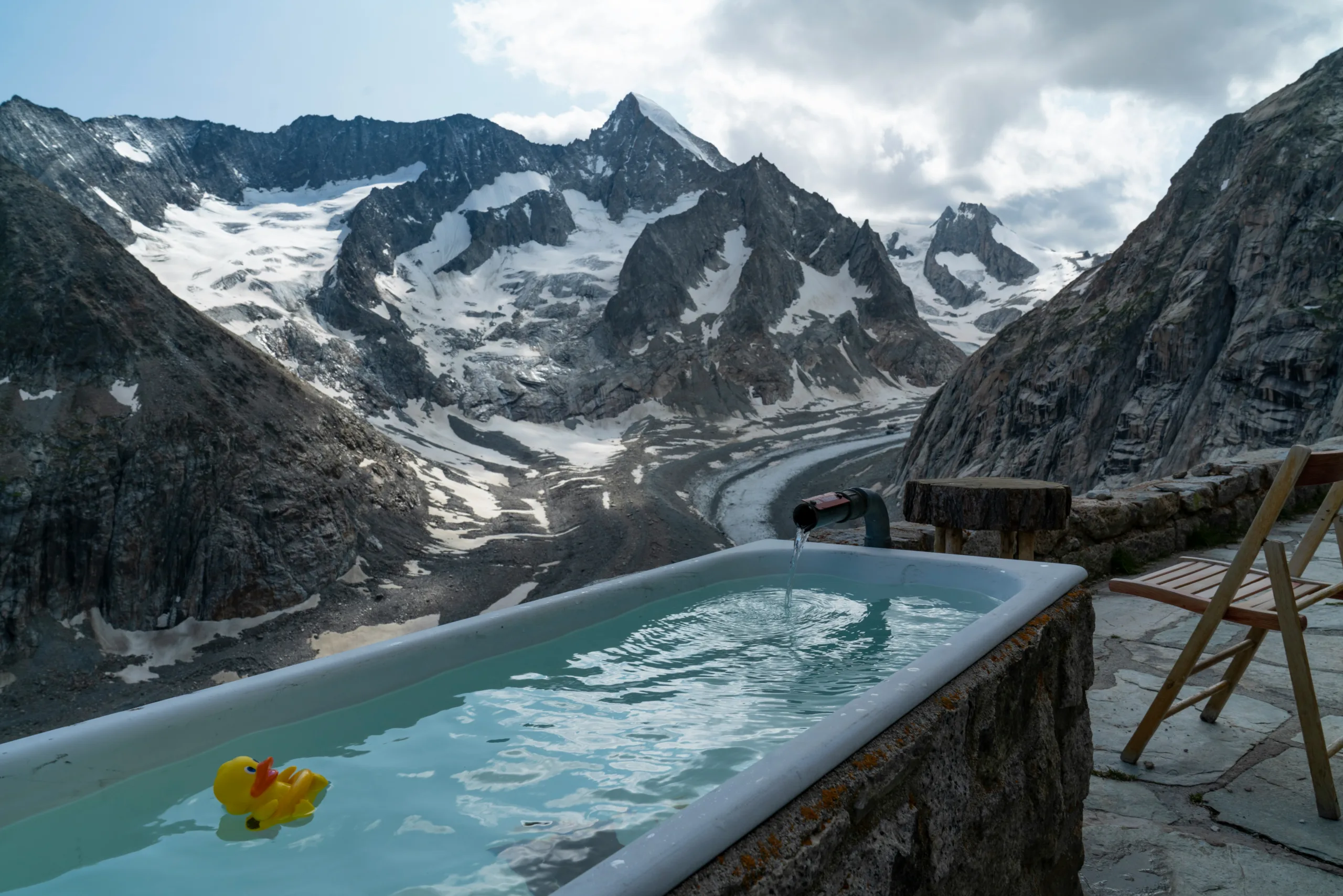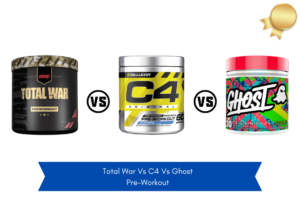Have you ever wondered whether an ice bath could have benefits for you? In this guide, we’ll delve into six scientifically proven advantages of ice baths for both your physical and mental health. While the idea of immersing yourself in cold water might seem daunting, the rewards may surprise you. From speeding up recovery after a tough workout to boosting your mood and overall well-being, ice baths offer a range of potential perks that are supported by research. So, if you’re curious about the effectiveness of this age-old practice, keep reading to discover the science behind the chill.
Ice baths, also known as cold-water immersion, have long been utilized by athletes and wellness enthusiasts for their myriad benefits. In this comprehensive guide, we’ll explore the multifaceted advantages of incorporating ice baths into your routine, from physical recovery to mental rejuvenation.
A Brief History:
Ice baths have a rich history dating back centuries, rooted in the belief of their therapeutic benefits across ancient civilizations. In ancient Greece, Hippocrates, the renowned physician, prescribed cold water baths for various ailments, emphasizing their healing properties for muscle soreness and inflammation. Similarly, ancient Romans embraced cold water immersion in public baths, known as thermae, where citizens sought relaxation and rejuvenation.
Throughout the Middle Ages, monasteries and convents incorporated ice baths into their healing rituals, viewing them as purifying and cleansing for the body and soul. The practice continued to thrive into the 19th and early 20th centuries with the rise of hydrotherapy, which utilized water-based treatments, including ice baths, for medical purposes in hospitals and sanitariums.
In the modern era, ice baths experienced a resurgence, particularly among athletes and sports professionals aiming to optimize recovery and performance. Elite athletes and coaches recognize the benefits of cold water immersion for reducing muscle soreness and accelerating recovery. Today, ice baths are integral to the training regimens of athletes across various sports disciplines.
Beyond athletics, ice baths have gained popularity among wellness enthusiasts seeking natural remedies for stress relief and relaxation. Whether used for recovery, rejuvenation, or simply as a refreshing escape, ice baths continue to play a prominent role in promoting physical and mental health in modern society.
Physical Benefits:
Ice baths are renowned for their ability to reduce muscle soreness and inflammation, making them a valuable tool for post-exercise recovery. When you immerse your body in cold water, typically between 50-59°F (10-15°C), it triggers a series of physiological responses that accelerate muscle repair and minimize downtime between workouts. The cold temperature constricts blood vessels, reducing swelling and inflammation in the muscles. This constriction also helps flush out metabolic waste products, such as lactic acid, that accumulate during intense exercise, promoting faster recovery. Additionally, the cold exposure promotes improved circulation and blood flow, which aids in pain relief from injuries and enhances overall healing.
Psychological Benefits:
The stress-inducing nature of cold-water immersion triggers the release of endorphins, neurotransmitters responsible for feelings of relaxation and well-being. As a result, ice baths can serve as a natural stress reliever, helping individuals unwind and recharge both mentally and emotionally. Many users report feeling invigorated and focused after an ice bath session, making it an effective tool for managing stress and improving mood. The sensation of immersion in cold water can also induce a meditative state, allowing individuals to disconnect from the stressors of daily life and find mental clarity and peace.
Performance Enhancement:
Athletes often rely on ice baths to expedite recovery and optimize performance. By reducing muscle inflammation and promoting faster healing, ice baths allow athletes to train harder and more frequently, leading to improvements in strength, endurance, and overall athletic performance. Moreover, the cold exposure may enhance cardiovascular function and thermoregulation, further enhancing athletic capabilities. Cold-water immersion has also been shown to decrease muscle fatigue and improve neuromuscular function, enabling athletes to maintain peak performance during prolonged or intense training sessions.
Immune System Boost:
Cold exposure has been shown to stimulate the body’s immune response, potentially bolstering its defenses against illness and infection. Regular ice bath sessions may help strengthen the immune system, reducing the risk of falling ill during cold and flu season. Additionally, the stress-reducing effects of cold-water immersion can contribute to overall immune resilience. The activation of the body’s stress response during cold exposure triggers the release of stress hormones, such as cortisol, which play a role in modulating immune function. By regularly exposing the body to cold stress, individuals may enhance their immune response and increase their resistance to infectious diseases.
Skin and Beauty Benefits:
In addition to its physical and mental advantages, ice baths can also benefit the skin. The cold temperature constricts blood vessels, reducing inflammation and puffiness, while simultaneously tightening pores and improving skin texture. Many individuals report a healthy glow and improved complexion after incorporating ice baths into their skincare routine, making it a refreshing addition to any beauty regimen. Cold-water immersion has been used in skincare treatments for centuries, with ancient civilizations such as the Romans and Greeks utilizing cold baths to rejuvenate the skin and maintain a youthful appearance. The cold water helps constrict blood vessels, reducing redness and inflammation, while also promoting collagen production and skin elasticity. Additionally, the invigorating sensation of immersion in cold water can awaken the senses and leave you feeling refreshed and revitalized.
Weight Loss and Metabolic Benefits:
Cold exposure has been linked to increased calorie expenditure and fat metabolism, potentially aiding in weight loss and weight management efforts. When you expose your body to cold temperatures, it activates brown fat cells, which generate heat to maintain body temperature. This process, known as thermogenesis, increases energy expenditure and can help burn calories and reduce body fat. Additionally, the stress response induced by cold-water immersion may promote the breakdown of stored fat for fuel, further supporting weight loss goals. Cold exposure has also been shown to improve insulin sensitivity and regulate blood sugar levels, which can help prevent weight gain and metabolic disorders such as diabetes. By incorporating ice baths into your routine, you can harness the metabolic benefits of cold exposure to support your weight loss and fitness goals.
Precautions and Risks:
While ice baths offer numerous benefits, it’s essential to approach them with caution, particularly if you have certain medical conditions or sensitivities. Prolonged exposure to cold water can increase the risk of hypothermia or frostbite, especially in individuals with compromised circulation or nerve function. It’s important to monitor your body’s response and limit ice bath sessions to a safe duration, typically 10-20 minutes, to avoid adverse effects. Additionally, individuals with heart conditions or high blood pressure should consult with a healthcare professional before incorporating ice baths into their routine. It’s also important to listen to your body and discontinue the ice bath if you experience any discomfort or adverse reactions.
How to Get the Most benefits of Ice Bath:
Preparation:
It is important to follow the some rules in order to achieve the maximum benefits of ice bath. Before diving into an ice bath, it’s essential to prepare both your mind and body for the experience. Start by gathering all the necessary equipment, including a bathtub or container large enough to immerse your body comfortably, bags of ice or ice packs, a thermometer to monitor water temperature, towels, and warm clothing for after the bath. Choose a quiet and comfortable space where you can relax without interruptions.
Temperature:
The ideal temperature for an ice bath typically ranges between 50-59°F (10-15°C). Fill your bathtub with cold water, adjusting the temperature as needed to achieve the desired range. You can use a thermometer to ensure the water is within the recommended temperature range for optimal therapeutic effects.
Duration:
Ice bath durations vary depending on individual tolerance and preference, but a typical session lasts between 10 to 20 minutes. Start with shorter durations, gradually increasing the time as you become more accustomed to the cold water immersion. It’s essential to listen to your body and exit the ice bath if you experience any discomfort or adverse reactions.
Entering the Ice Bath:
Before entering the ice bath, warm up your body with light exercise or stretching to promote circulation and minimize shock. Once you’re ready, slowly lower yourself into the cold water, allowing your body to acclimate gradually. Focus on deep breathing and relaxation techniques to help ease into the cold temperature and minimize discomfort.
Breathing Techniques:
During the ice bath, focus on slow and controlled breathing to help manage the body’s stress response and promote relaxation. Take deep breaths in through your nose, filling your lungs with air, and exhale slowly through your mouth. This rhythmic breathing pattern can help calm the mind and reduce feelings of anxiety or tension.
Mindfulness and Relaxation:
Embrace the ice bath as an opportunity for mindfulness and relaxation. Shift your focus inward, paying attention to the sensations in your body and the rhythm of your breath. Visualize the cold water washing away tension and fatigue, leaving you feeling refreshed and revitalized. Practice gratitude for your body’s resilience and the opportunity to nurture your physical and mental well-being.
Aftercare:
After completing your ice bath session, carefully exit the cold water and dry off with a towel. Dress warmly in comfortable clothing to prevent heat loss and maintain your body temperature. Some individuals may experience lingering sensations of cold or numbness, which is normal and typically resolves within a few minutes. Follow up your ice bath with gentle movement or light exercise to promote circulation and further enhance the recovery process.
Hydration and Nutrition:
Hydrate your body with plenty of fluids after an ice bath to replenish lost fluids and support recovery. Consider consuming a nutritious snack or meal containing carbohydrates and protein to refuel your muscles and aid in recovery. Nourishing your body with the right nutrients can enhance the benefits of the ice bath and promote optimal recovery.
Repeat as Needed:
Incorporate ice baths into your recovery regimen as needed, based on your training intensity, goals, and personal preferences. Some individuals may benefit from daily ice bath sessions, while others may prefer less frequent use. Listen to your body and adjust your ice bath routine accordingly to meet your recovery needs.
Alternatives to Ice Baths:

If the idea of submerging yourself in cold water doesn’t appeal to you, there are alternative methods for reaping similar benefits. Cryotherapy chambers, which expose the body to extremely cold temperatures for a short duration, offer a convenient and controlled alternative to traditional ice baths. Contrast baths, which alternate between hot and cold-water immersion, can also promote circulation and recovery without the intense cold exposure of ice baths. Other options include cold showers, cold-water swimming, and cold packs or ice massages applied directly to targeted areas of the body. Experiment with different cold therapy techniques to find the method that works best for you and fits seamlessly into your routine.
Personal Experiences and Testimonials:
Countless individuals, from professional athletes to everyday exercisers, swear by the benefits of ice baths for recovery and well-being. Anecdotes and testimonials from real users can provide valuable insight into the practical applications and efficacy of ice baths in various contexts. Hearing firsthand accounts of improved performance, reduced soreness, and enhanced overall health can inspire others to incorporate ice baths into their own routines. Many athletes and fitness enthusiasts have shared their experiences with ice baths on social media platforms, blogs, and forums, providing a community of support and encouragement for those considering adding ice baths to their recovery regimen. By sharing your own experiences with ice baths, you can contribute to this collective body of knowledge and help others discover the transformative benefits of cold-water immersion.
Scientific Research and Evidence on Ice Bath Benefits:
While anecdotal evidence is compelling, scientific research provides further validation of the benefits of ice baths. Numerous studies have explored the physiological and psychological effects of cold-water immersion, consistently demonstrating its efficacy in reducing muscle soreness, improving recovery, and enhancing performance. By reviewing the latest research findings, you can gain a deeper understanding of the mechanisms underlying the benefits of ice baths and make informed decisions about incorporating them into your routine. Research has shown that ice baths can help reduce inflammation and muscle damage following intense exercise, leading to faster recovery and improved performance in subsequent workouts. Additionally, cold-water immersion has been shown to increase blood flow to the muscles, enhancing nutrient delivery and waste removal, which can further support recovery and muscle repair. Psychologically, ice baths have been found to reduce feelings of fatigue and improve mood, helping individuals recover both physically and mentally from strenuous exercise.
Additional Resources and Further Reading:
- National Center for Biotechnology Information (NCBI): The NCBI website offers a wealth of scientific research articles on benefits of ice bath and its effects on recovery, performance, and health. www.ncbi.nih.gov
- The American Council on Exercise (ACE): ACE provides informative articles and resources on fitness, recovery, and wellness, including guidance on incorporating ice baths into your exercise routine. www.acefitness.org
- Also read our article on Exercise and its Effect on Environmental Health (fittechspace.com)
Take the first step towards optimizing your recovery and performance today. Dive into the world of ice baths and experience the transformative benefits for yourself. Your body and mind will thank you.





Pingback: Why Exercise for Heart Health is important? - Fittech Space